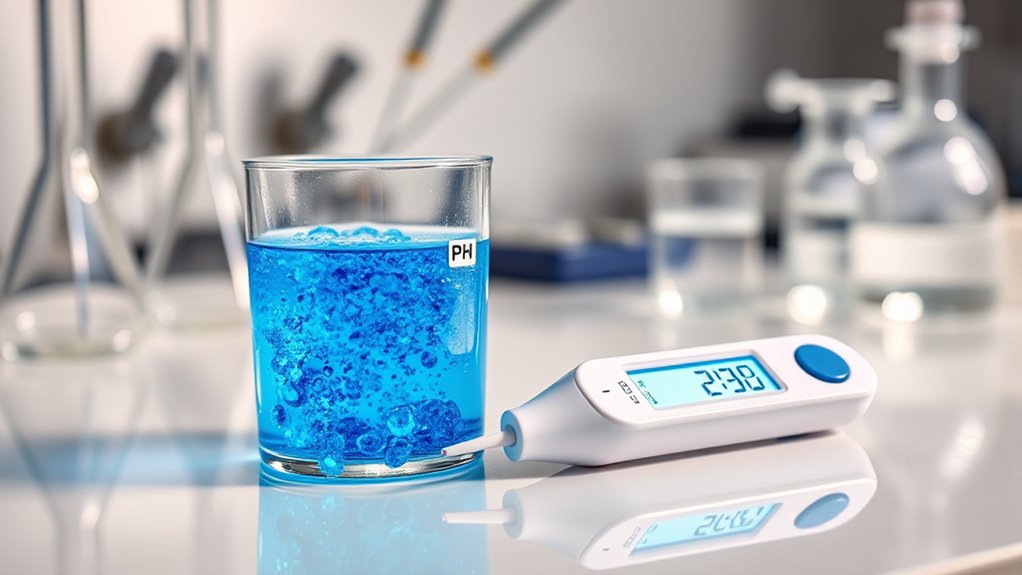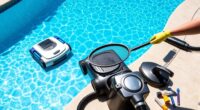Before adjusting your pH and alkalinity again, thoroughly inspect your water system for visible issues like cloudy water, odors, or leaks. Check your current water conditions, ensuring test results are accurate by cleaning and calibrating your testing equipment. Confirm the circulation and filtration systems work properly, without clogs or irregular flow. Also, remove debris and address any contaminants. Following these steps will help you get precise readings and maintain balanced water—there’s more to learn as you go along.
Key Takeaways
- Inspect the water for cloudiness, odors, or discoloration indicating chemical imbalance before testing pH and alkalinity.
- Ensure all testing equipment is clean, calibrated, and functioning properly for accurate readings.
- Check water circulation and filtration systems to confirm consistent water flow and filter cleanliness.
- Remove debris, algae, or contaminants that could skew test results or affect water chemistry.
- Record current water conditions and any visible issues to compare against test results and plan necessary adjustments.
Inspect Your Water System for Visible Issues
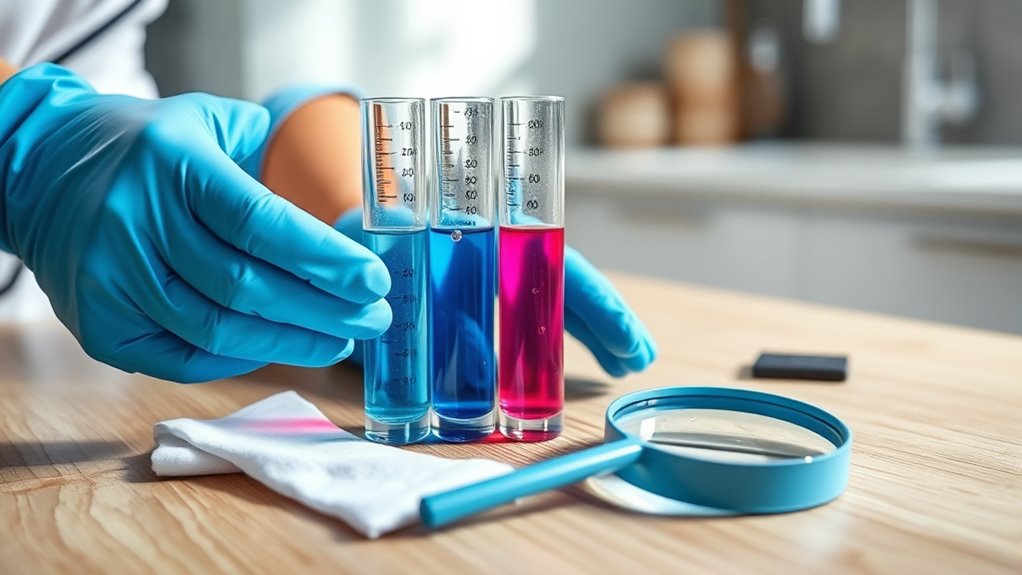
Before testing your pH and alkalinity levels, inspecting your water system for any visible issues is essential. Look for signs of chemical imbalances, such as cloudy water, unusual odors, or discoloration. These symptoms can indicate underlying problems that may affect water quality. Also, check your equipment for malfunctions—loose fittings, leaks, or corroded parts can disrupt proper water chemistry. Ensuring all components are functioning correctly helps prevent inaccurate test results and potential damage to your system. Address any visible issues immediately to maintain a stable environment. Regular inspections keep you alert to potential problems early, saving you time and costly repairs later. Taking these steps sets a solid foundation for accurate testing and reliable water maintenance. Additionally, maintaining proper water quality parameters can help prevent issues that interfere with your system’s performance.
Review and Record Current Water Conditions
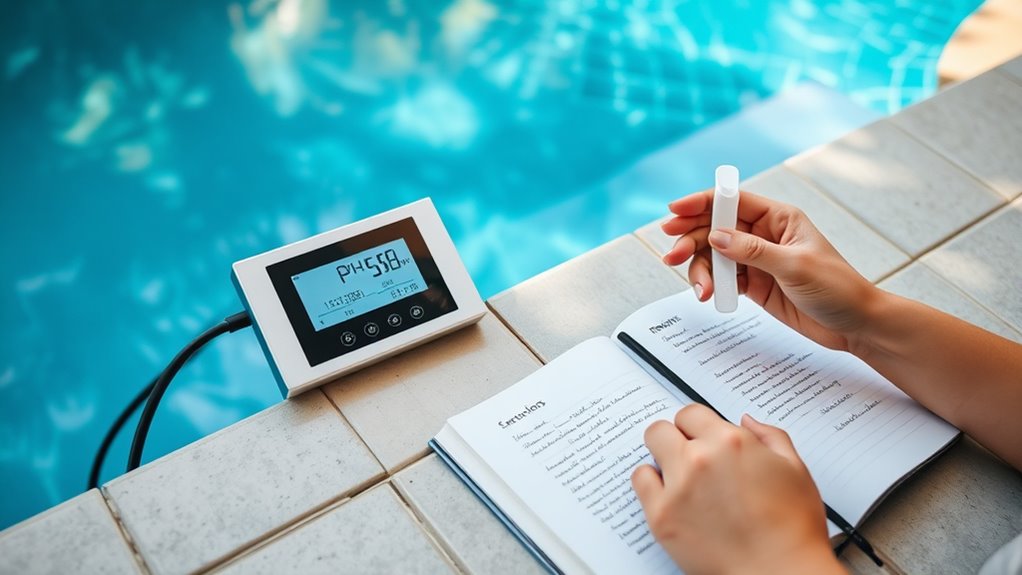
Once you’ve inspected your water system and addressed any visible issues, it’s time to review and record the current water conditions. Start by testing your water chemistry, focusing on pH and alkalinity levels. Accurate readings are essential, so verify your testing methods are reliable to maintain testing accuracy. Record the results carefully, noting the exact measurements and any observations about color, clarity, or odor. This documentation helps you track changes over time and provides a baseline for future adjustments. Double-check your test results against recommended ranges for your system. Keeping detailed records ensures you make informed decisions later and avoid unnecessary chemical adjustments. Regular monitoring and understanding water quality parameters are crucial for maintaining a healthy, balanced water environment.
Clean and Calibrate Your Testing Equipment
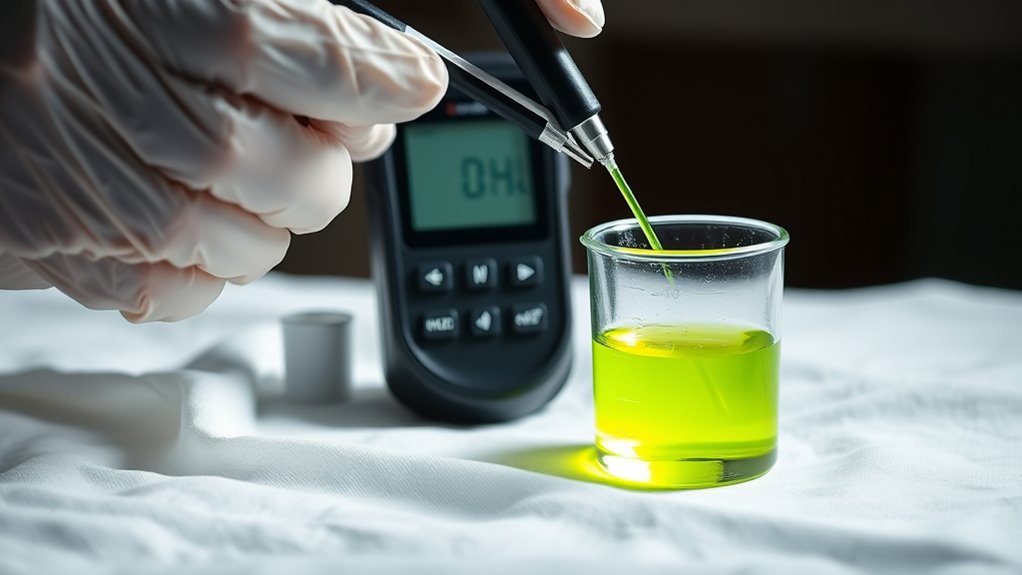
To guarantee your test results are accurate, it’s vital to clean and calibrate your testing equipment regularly. Start by inspecting your pH and alkalinity test kits for any dirt or residue, then clean them thoroughly to prevent contamination. Proper sensor calibration ensures your readings are reliable; follow manufacturer instructions to adjust the sensor as needed. Using fresh, high-quality reagents is essential for reagent accuracy, so replace expired or contaminated solutions. Regular calibration checks help identify if your equipment drifts from the true value, maintaining measurement precision. Keep calibration solutions stored properly and perform calibration at recommended intervals. Additionally, understanding the importance of exploration’s legacy can inspire a thorough approach to your testing routine, emphasizing the value of accuracy and reliability. These steps will help you achieve consistent, accurate test results, giving you confidence in your water chemistry assessments before making any adjustments.
Check for Proper Circulation and Filtration
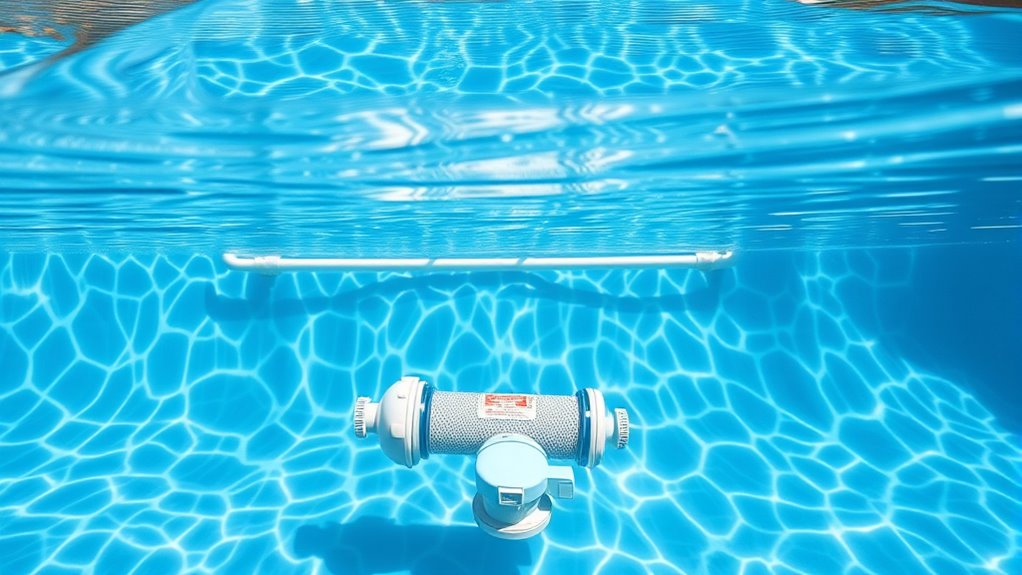
Ensuring your pool’s circulation and filtration systems are working properly is essential for maintaining clean and healthy water. Check that your pool pump runs smoothly without unusual noises or leaks. Confirm the filtration system is clean and the filter media isn’t clogged. Proper circulation prevents stagnant areas and distributes chemicals evenly. Regularly inspect the flow rate and ensure the pump is operating at the correct speed. Additionally, understanding the importance of Volkswagen Tuning can help you optimize your vehicle’s performance for a better driving experience.
Identify and Address Any Potential Contaminants or Debris
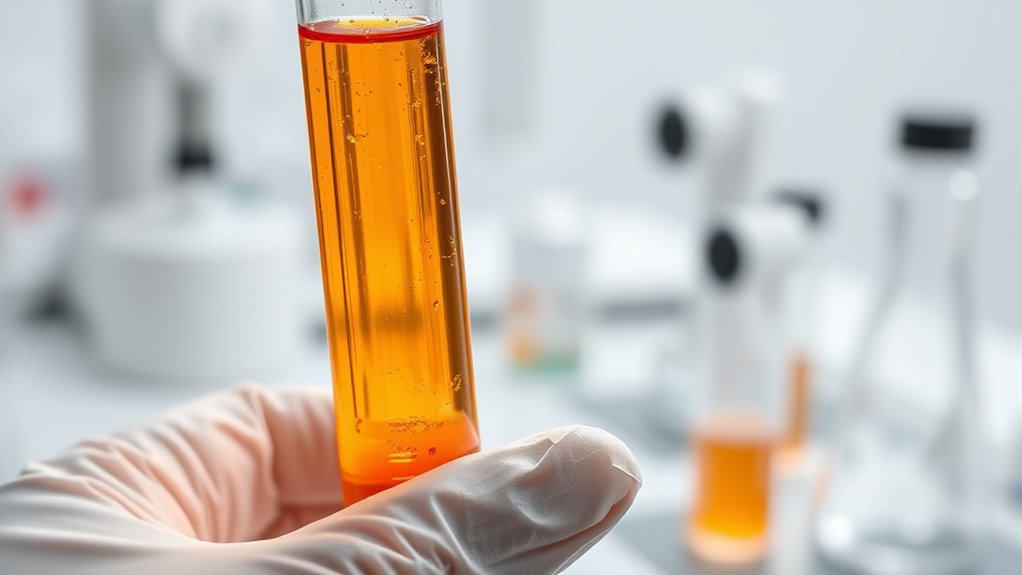
Contaminants and debris can quickly compromise your pool’s water quality and safety. Waterborne bacteria pose health risks, and chemical residues from previous treatments can interfere with your water balance. Start by thoroughly inspecting the pool for leaves, dirt, and other debris, removing them with a skimmer net. Next, check the water for visible signs of contamination, like cloudiness or algae growth. Test for chemical residues that might linger after treatments, which could affect pH and alkalinity levels. Address any issues immediately—vacuum the bottom, clean filters, and consider shocking the pool if bacteria or residues are suspected. Proper mechanic shops for fuel injection cleaning and regular maintenance can help prevent lingering contaminants from affecting your water quality. Clearing debris and contaminants ensures your water remains safe, clean, and ready for proper pH and alkalinity adjustments.
Frequently Asked Questions
How Often Should I Test Ph and Alkalinity Levels?
You should test your pool’s pH and alkalinity levels at least twice a week during regular pool maintenance. If you’ve been using the pool heavily or after a heavy rain, test more frequently to keep water chemistry balanced. Regular testing helps you catch imbalances early, ensuring clear, safe water. Use a reliable test kit and adjust chemicals as needed to maintain ideal pH and alkalinity levels.
What Are the Safe Ph and Alkalinity Ranges for Pools?
Think of your pool’s water chemistry as a delicate dance, where pH should stay between 7.2 and 7.6, and alkalinity around 80-120 ppm. Maintaining these ranges keeps the chemical equilibrium balanced, preventing corrosion or scaling. When I first adjusted my pool’s pH, I realized how vital it is to stay within these limits; otherwise, water quality suffers, and the dance becomes chaotic.
Can Temperature Affect Ph and Alkalinity Readings?
Yes, temperature effects can influence pH and alkalinity readings. When water warms or cools, it alters the chemical balance, causing measurements to shift. Additionally, temperature fluctuations can impact calibration accuracy, leading to inaccurate results if your testing kit isn’t temperature-compensated. Always allow your test samples to reach room temperature or use a meter with temperature correction features to guarantee precise readings. This helps you maintain proper water chemistry effectively.
How Do I Interpret Fluctuating Ph and Alkalinity Levels?
Imagine a calm swimming pool suddenly rippling with change. Fluctuating pH and alkalinity levels signal your water’s balance is shifting. You interpret this by noting sudden spikes or drops, indicating the need for pH correction or alkalinity adjustment. Consistently monitor trends, not just single readings, to determine if adjustments are needed. Regular testing helps you keep your pool balanced, ensuring clear, healthy water for swimmers.
What Are Common Causes of Ph and Alkalinity Imbalance?
You often face pH and alkalinity imbalances due to improper chemical balance or inaccurate test results. Common causes include adding too many chemicals, uneven distribution, or low test accuracy, which can lead to fluctuating levels. To prevent this, regularly test your water, guarantee accurate readings, and maintain proper chemical adjustments. Keeping a consistent chemical balance helps stabilize pH and alkalinity, ensuring your pool stays safe and balanced.
Conclusion
Before you immerse yourself in adjusting pH or alkalinity, take a moment to follow these steps. Inspect your system, review your water’s current state, and make certain your tools are accurate. Check circulation and clear out debris. Think of it as online shopping—if your water system isn’t properly prepared, you’ll just be wasting time and resources. Doing this now keeps your aquatic kingdom healthy, so don’t forget—it’s the key to avoiding a waterlogged disaster!
